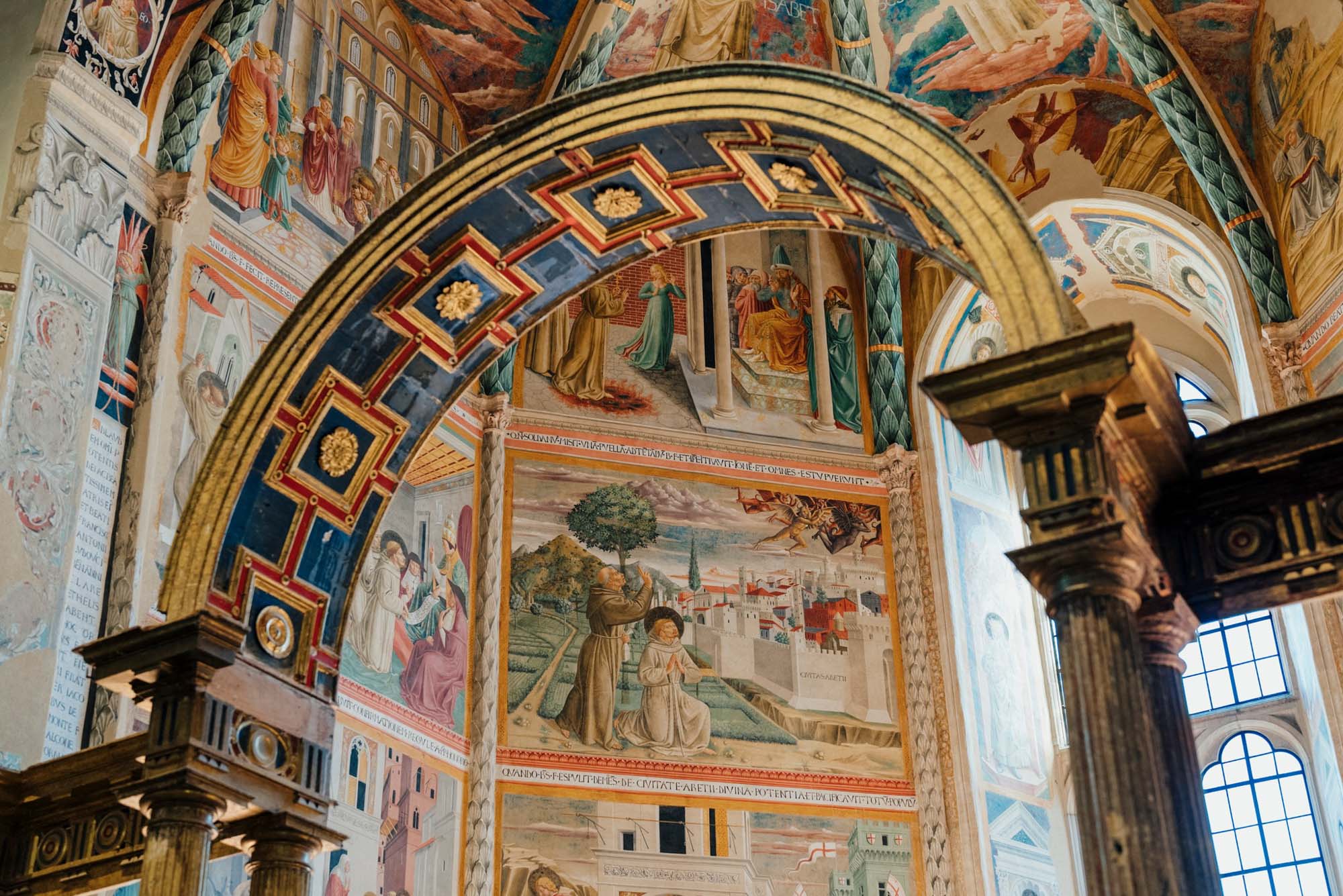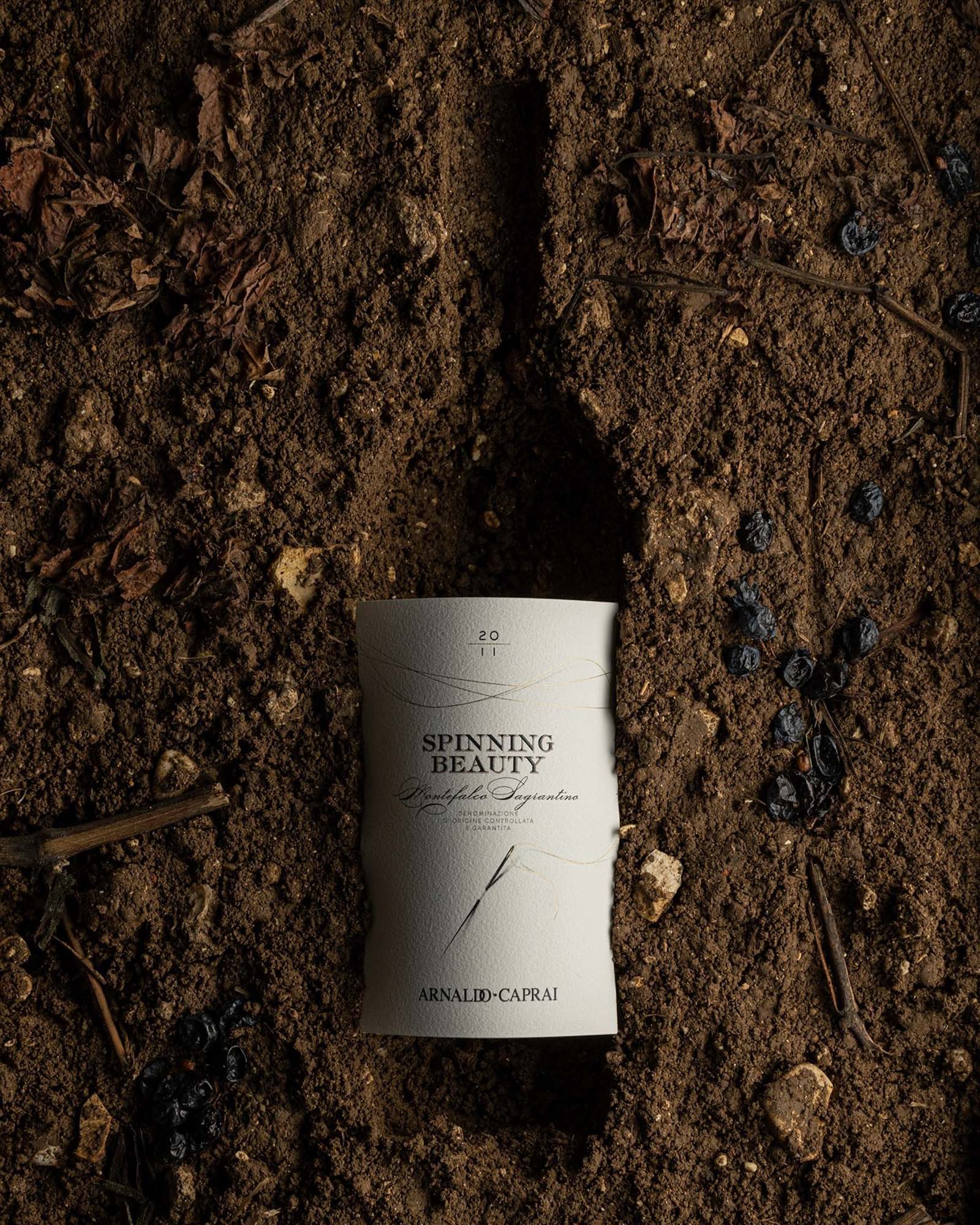
From Origins to the Middle Ages
You cannot talk about Umbria and Montefalco today without mentioning Sagrantino.
A very old vine that produces red grapes with exceptional characteristics for both long ageing wines and passito wines.
Its origins even seem to date back to Roman times. Pliny the Elder, in his Naturalis Historia, mentions the Itriola or Irciola vine, which was peculiar to 'Umbria of Bevagna' and the Piceno area; in 1953, the archaeologist Carlo Pietrangeli hypothesised the combination of Itriola with Sagrantina grapes, bearing in mind that the Montefalco territory was part of the municipality of Bevagna.
According to some, Sagrantino arrived in Umbria, particularly in the Montefalco area, thanks to Franciscan monks from Asia Minor. According to others, however, it was spread in the area in the Middle Ages by Byzantine monks arriving from Greece.
However, it was during the Middle Ages, following the growing importance of wine in religious communities and with the practice of viticulture becoming increasingly widespread in convents and the countryside, thanks to the efforts of monks and friars, that the role and importance of the vine became more and more affirmed, so much so that municipal accounting records testify to Montefalco wine being sent as gifts to cardinals and pontiffs.
Part of its 'sacred' name could, therefore, derive precisely from these religious roots, from the fact that it was a mass wine or, more simply, a sacristy or sacristy wine.
In the Middle Ages, vineyards were one of the hinges around which people and communities organised their lives. This is demonstrated by the church of San Bartolomeo, one of the oldest parishes in Montefalco, first documented in 1219, which features a single lancet window in the outer apse wall decorated with vine shoots and bunches and other typical medieval motifs.
This is demonstrated by the statuary legislation, which dedicates special attention to vines and grapes. In the Historical Archives of Montefalco, there are numerous documents that testify to the constant care that "[...] the vine-dressers reserved for the field planted with vines" since 1200.
Its origins seem to date back to Roman times

discover
The Renaissance
In 1451, the famous Florentine painter Benozzo Gozzoli, called by the Franciscans to fresco the apse of their church, now the Civic Museum of Montefalco, perhaps alluded to Sagrantino, painting the bottle of red wine on the table set by Cavaliere da Celano as part of the pictorial cycle of the 'History of the Life of Saint Francis'.
In 1451, the famous Florentine painter Benozzo Gozzoli, called by the Franciscans to fresco the apse of their church, now the Civic Museum of Montefalco, perhaps alluded to Sagrantino, painting the bottle of red wine on the table set by Cavaliere da Celano as part of the pictorial cycle of the 'History of the Life of Saint Francis'.
Medium-sweet grapes and robust berries that are unlikely to rot are the innate qualities of Sagrantino. This vine has a fairly low vigour and prefers medium-textured, siliceous-clayey soils with southern exposure, and generally gives rather irregular yields.
While it is currently vinified mainly for the production of dry wines, it seems that in ancient times tradition preferred a sweet type, obtained by drying the grapes on wooden racks. Whether dry or passito, according to the Disciplinary Regulations, it must be aged for at least thirty-six months, of which, for the dry, at least twelve in wooden barrels.
The Sagrantino regulations are among the oldest: as early as the 14th century, documents testify to the existence of rules to protect and regulate the cultivation, harvest and production of the grapes. In 1540, there is news of a municipal ordinance in Montefalco that established the date of the grape harvest.
During the Renaissance period, the wine of Montefalco was already well-known and appreciated, so much so that in 1565 Cipriano Piccolpasso, superintendent of the fortress of Perugia, in his report on the Papal State for the Pope, specifically dedicated to the cities and territories subject to the government of Perugia, wrote: "[...] Montefalco, set on a hill with a beautiful view, is adorned with beautiful and good vineyards, cultivated land and great fruit, makes fine wines [...]". We can safely say that Sagrantino is at least over four hundred years old.
One of the oldest records of the Sagrantino grape, kept in a notebook by the Assisian notary Giovan Maria Nuti, dates back to 1598 and is currently kept in the Notarial Archives of Assisi. The notary refers to the custom, widespread in Foligno, of mixing Sagrantino with musts to give them aroma and flavour.
The Itriola grape is also mentioned in De naturali vinorum historia, de vinis Italiae e de convivis antiquorum, a fundamental work of Renaissance Italian oenological history, published in 1595 by Andrea Bacci, who defines it as particularly suitable for the production of Moscatelli. The Marche doctor and naturalist also mentions the assiduous presence of this grape in the areas of Bevagna, Narni and Amelia.
The municipal statutes, in their intention to regulate every aspect of town life, also dealt with the protection and defence of vines and grapes through a detailed series of prohibitions and sanctions, so much so that in 1622, Cardinal Boncompagni, legate of Perugia, aggravated the sanctions already provided for in the statute, even providing for "[...] the penalty of the gallows if any person cut the grape vine [...]".



